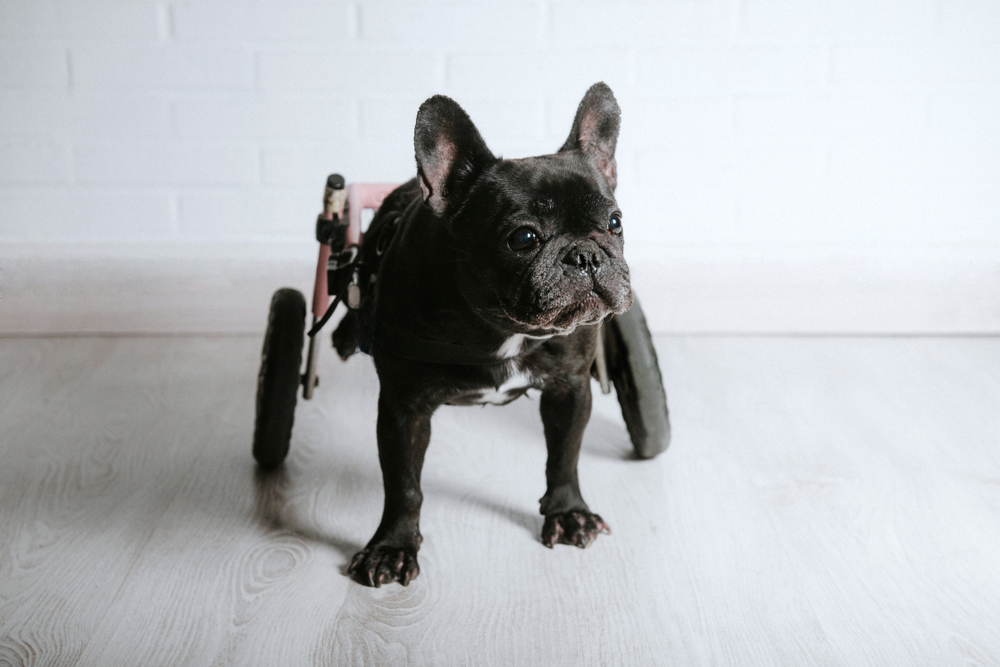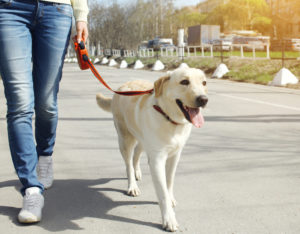Orthoses help with joint problems
Many dogs have problems with their joints due to osteoarthritis, and sometimes they can no longer walk. Custom-made orthoses that support the weakened joints or parts of the body help here. Physiotherapy can also help give the animal more freedom of movement. At a point where people have long been using rollators, crutches or wheelchairs, animals have to get along with what is offered to them. And that's not much, especially since orthotics and prostheses for animals are extremely expensive.
They have to be made to measure, which is accompanied by the difficulty of making a plaster cast of the affected body part. The materials that are used are the same as those used in human orthopedics. Carbon is a popular choice, but it is more expensive than plastic. But carbon is more resilient and flexible. However, the future is seen more in 3D printing.
The production of an individually fitting wheelchair or an orthosis is a real sisyphean work. After the model has been made from plastic or carbon, work is continued by hand. Everything has to be laminated and sanded, followed by upholstery, sewing, riveting and drilling? depending on the need for further adjustments. Up to 20 working hours are incurred per orthosis. This costs a lot of money, which is why it is understandable that the pet owner asks himself: does the pet insurance pay for that?
Little used tools for animals
Many pet owners do not even know that orthoses can be made at all. Success stories only occasionally make their way through the media and are then given a lot of attention, but are quickly forgotten. In addition, it costs several hundred Swiss francs to have such special products made for your dog.
Those who do not have animal health insurance often have to make the decision to euthanize the animal. After all, it is not only the orthosis that costs money, but also the entire treatment up to then, combined with constant physiotherapy. Some critics see no point in the aids and are of the opinion that they are not doing the animals any favors. After all, they could no longer run properly, although that would suit their nature. In this respect, it is only advisable to every pet owner to assess the behavior of his animal individually and then to make the decision about orthosis or not or about life and death.
Does the animal insurance cover the costs?
The assumption of costs is possible in principle, but it depends on the animal insurance and the insured cases. Most of the time, cost limits are set here, whereby these are limited partly per illness and partly to the year. For example, formulations can refer to a maximum cost assumption of 80 percent of the surgery costs per year.
The remaining costs must be borne by the owner. In addition, it is possible that a deductible has already been agreed for each insured event. Furthermore, a maximum amount of damage may have been agreed. If this is exceeded, the animal insurance no longer pays for orthoses and Co.
Incidentally, wheelchairs are usually cheaper than orthoses and prostheses and can be used when there is no longer any possibility of adjusting a walking aid exactly.
Conclusion: animal insurance bears the cost of wheelchairs and orthotics
In principle, the costs for orthotics and wheelchairs are also covered by the animal health insurance, but this does not always apply. It may also be that such aids have been excluded, which is noted in the insurance policy. It is also important to consider the maximum limit for reimbursement of costs per year or per insured event. Everything that goes beyond this must be paid for by the pet owner himself.







